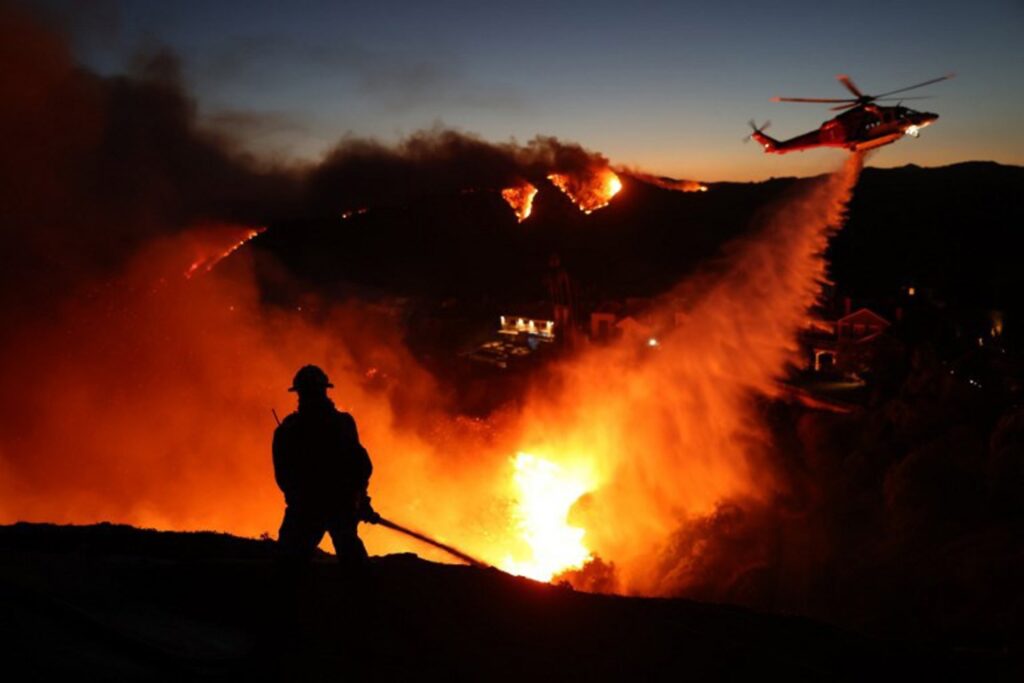Human-driven climate change has worsened the wildfires in California, according to a report released on Tuesday by 32 scientists from World Weather Attribution (WWA).
Decreased rainfall, dried vegetation, and more frequent droughts coinciding with Santa Ana winds have intensified the fires. If fossil fuel burning continues, Los Angeles will become drier and more flammable, note the scientists, who used meteorological observations and climate models to study the impact of climate change on the severity and likelihood of extreme weather conditions.
Wildfires broke out on 7 January in the hills around Los Angeles, fanned by Santa Ana winds, which made already dry vegetation even drier, hastening the spread of the fires.
NBC News reported at least 29 deaths, and over 200 square kilometres were burned, according to the latest data from CAL Fire.
The scientists assert that the hot, dry, and windy weather conditions that fuelled the fires are 35% more likely due to climate change linked to fossil fuel combustion.
If the Earth warms by 2.6°C compared to pre-industrial levels (1850-1900) - which it is expected to do by 2100 - these conditions are 80% more likely.
The study also highlights that the wildfire season will extend, with around 23 additional days of fire-friendly conditions annually, increasing the chances of wildfire days coinciding with Santa Ana wind days.

